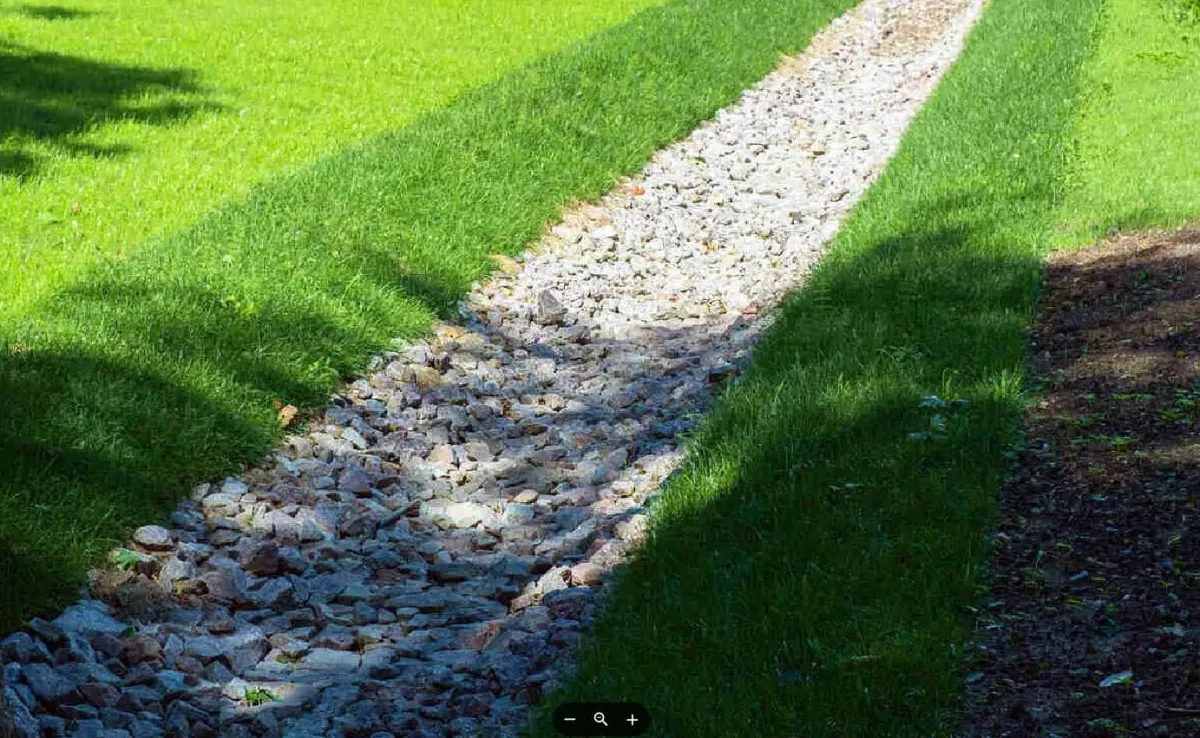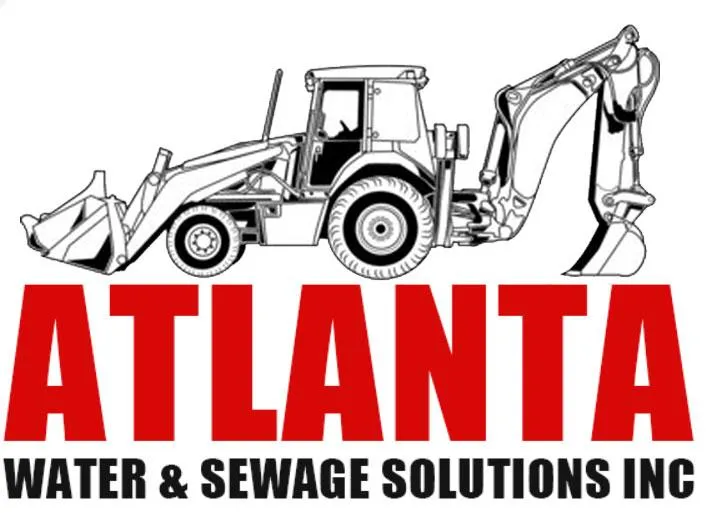
Best Solutions for French Drain Near Atlanta | Fix Drainage in Fulton County
1. Why Your Yard Keeps Flooding (Even When It’s Not Raining Much)
You walk out to your yard and your shoes sink into the mud. Again. The sun's out, but your lawn feels like a sponge. Maybe your basement smells damp, or you notice water pooling where it shouldn’t. You're not alone.
If you're dealing with standing water around your home in Fulton County, you're probably frustrated—and maybe a little overwhelmed. You’ve Googled solutions, watched a few videos, maybe even tried some DIY trenching. But nothing’s really worked. The water keeps coming back.
At Atlanta Water & Sewage Solutions, Inc., we’ve met plenty of homeowners just like you—tired of soggy lawns, flooded basements, or landscaping that’s slowly drowning. Let’s walk through what’s actually going on—and what to do about it.

2. What Exactly Is a French Drain? (And Why It Works So Well in Georgia)
A French drain is a trench that uses gravel and a perforated pipe to carry water away from where you don’t want it—like your foundation, driveway, or backyard. Think of it as a hidden channel that collects water and moves it to a safe place, like a storm drain or dry well.
In Georgia, with our heavy clay soil and surprise downpours, water doesn’t absorb well. That means it collects on the surface—and stays there. A properly installed French drain helps redirect that water so it doesn’t ruin your lawn, rot your siding, or flood your crawlspace.
3. Top 5 French Drain Problems We See Around Atlanta
Unfortunately, not all French drains are installed right—or with the right materials. These are the five most common issues we come across in Fulton and surrounding counties:
1. Wrong slope: If the drain isn’t angled correctly, water doesn’t flow. It just sits there.
2. No filter fabric: Without a barrier, dirt and clay clog the pipe fast.
3. Cheap corrugated pipe: These crush easily and don’t last in our soil.
4. Too shallow: A drain that’s only a few inches deep won’t help much in a heavy rain.
5. No real outlet: If the water doesn’t have a place to go, it just pools at the end.
Most of these problems come from rushing the job—or not fully understanding how Georgia’s soil and weather behave. That’s where experience matters.
4. How Georgia Soil Affects Drainage: What Most People Miss
Here in North-Central Georgia, we have a lot of clay. It holds water tightly. So, when it rains hard (like it does in spring or during summer storms), the top layer quickly gets saturated. After that, the water has nowhere to go.
That’s why surface solutions like swales or grading don’t always cut it—especially on flat lots or around older homes. A French drain goes deeper, moving water through gravel and pipe instead of depending on the soil to soak it up.
5. The Best French Drain Materials for Fulton County Homes
We always tell folks: a French drain is only as good as what you put in it. These are the materials we trust most on our jobs:
Perforated PVC pipe (Schedule 40 or SDR-35): Sturdy and long-lasting—great for heavy clay soil.
Clean, angular gravel: This lets water flow freely without clogging.
Geotextile fabric: Keeps soil out, but lets water pass through.
Proper backfill and slope: This isn’t a product—but it's essential.
If someone quotes you for a job using corrugated black pipe and says “it’ll work just fine,” ask questions. You don’t want a short-term fix that fails in two years.
6. DIY vs. Hiring a Pro in Atlanta: What to Know Before You Dig
We get it—YouTube makes everything look easy. But with French drains, it’s not just about digging a trench and laying a pipe.
Here’s the hard truth:
If you dig too shallow, it won’t work.
If you forget the slope, it becomes a muddy mess.
If you don’t have the right tools, it takes way longer than expected.
Hiring a local expert—someone who knows how Fulton County lots drain (or don’t)—can save you money in the long run. We’ve been called out too many times to fix DIY drains that ended up just being soggy trenches.
7. Warning Signs You Need a French Drain—Before It Gets Worse
Sometimes homeowners call us after major water damage. But the warning signs usually show up long before that. Keep an eye out for:
Constant puddles or soft spots in your yard
Water staining along your foundation
Moldy smells or damp air in your basement
Erosion near walkways or patios
Water coming in under doors during storms
If you notice two or more of these, it’s worth getting someone out for an inspection. The sooner you address drainage, the less expensive the fix.
8. How Much Does a French Drain Cost in the Atlanta Area?
We know—this is the part everyone wants to skip to. And we get it. Cost matters.
On average, French drains in Fulton County run between $25–$45 per linear foot, depending on:
Depth of the trench
Type of pipe and gravel
Whether it’s in a tight area (like beside a house or under a deck)
Where the water is being redirected
For a typical backyard problem, most jobs range from $3,000–$6,000. Bigger installs, like full perimeter drains, can cost more—but they also protect much more.
Pro tip: If a contractor gives you a flat price without asking about your yard or soil, that’s a red flag.
9. What to Ask Before Hiring a Drainage Contractor Near Fulton County
Not all contractors are created equal. Here are five questions we recommend you ask anyone before they install a French drain on your property:
What type of pipe do you use?
Will you use filter fabric to prevent clogs?
What’s your plan for grading the trench properly?
Where will the water be redirected to?
Can I see photos or references from local installs?
If they can’t answer those quickly and clearly, you might want to keep looking.
10. What Makes Our Approach Different at Atlanta Water & Sewage Solutions
We’re not a giant chain or a big-name brand. We’re based in Oxford, Georgia, and we’re all about custom drainage done right. That means:
Taking time to understand your yard
Choosing materials based on local soil (not just what’s cheapest)
Making sure the water has a place to go—safely and legally
Cleaning up like we were never there
We’ve worked in everything from tight city lots in Atlanta to wide open backyards in Barrow and Clarke County. No two yards drain the same—and we build our systems like we know that.
11. Simple Steps to Get the Right Drainage Fix for Your Property
Ready to figure out your yard once and for all? Here’s what to do next:
Take a walk after the next rain. Snap photos of the problem areas.
Write down what you’ve tried (if anything), and what’s still happening.
Call a local expert (even if it’s not us!) and ask for a site visit.
Compare quotes carefully. Ask about materials, slope, and outlets.
Don’t wait—drainage issues rarely fix themselves. They usually get worse.
You shouldn’t have to plan your day around rain or avoid the backyard because it’s a swamp. A good French drain should be invisible, low-maintenance, and built to last. If you're in Fulton County or nearby and ready to get your yard back, we’re here to help you make sense of it.

